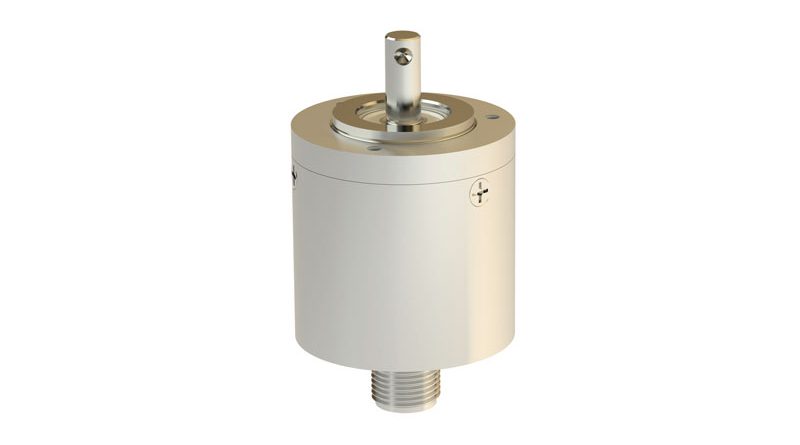Ultra-Compact Size for the Safety Encoder
With the TRK38, TWK introduces an ultra-compact single-turn magnetic encoder developed with safety-oriented applications in mind. With a diameter of only 38 mm and a length of also 38 mm, the sensor is suitable for mounting in confined installation spaces.
High power density in a compact package: packaging has become a key factor in many stationary and mobile machines. And TWK is well aware of this, in fact the TRK38 single-turn magnetic encoder measures just 38 x 38 cm and is thus extremely compact. The weight is also very low at approximately 60 g.
Nevertheless, the user does not have to compromise on performance. The TRK38 detects position and speed in a safety-oriented manner and fulfils the requirements of SIL 2 (IEC 61508) and Performance Level d (EN 13849). The position resolution is 16 bits per revolution. The certified EtherCAT FSoE interface ensures reliable transmission of the safety-related signals to the higher-level controller or to a safety relay, as well as programming of the sensor.
Compact and robust encoder, ideal even in harsh operating conditions
Despite its very compact dimensions and high-quality design, the TRK38 is also competitively priced with alternative devices such as sine-cosine and incremental encoders. And the aluminium housing and overall design enable long service life even under unfavourable conditions such as vibration and shock loads. The non-contact, wear-free measuring principle makes a significant contribution to this. TRK38 is suitable for safety applications in a wide range of applications. Like many of TWK’s developments, it was developed on the basis of a customer request for an extremely compact but robust single-turn encoder for safety applications, who was unable to find a suitable sensor among the relevant suppliers. On the basis of a comprehensive sensor programme for demanding applications, the developers adapt the respective basic model to the individual wishes of the customer – for example with regard to the size, the housing design, the electrical properties, the interface and quite generally for the mechanical and electrical integration into the surrounding construction. This applies not only to conventional sensors, but also to those that take on functional safety tasks.

